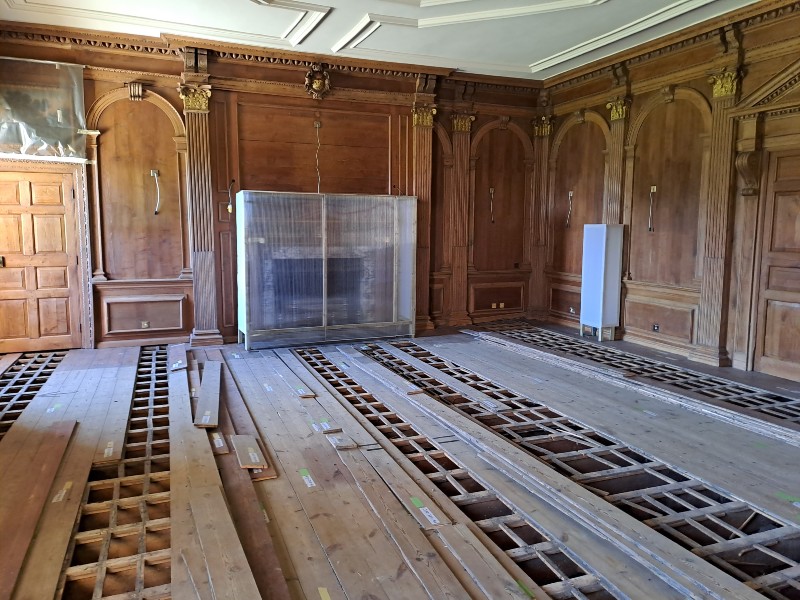CHEVENINGHOUSE.
A HISTORIC GRADE 1 LISTED BUILDING.
CLIENT: SIR ROBERT McALPINE
STATUS: COMPLETE
LOCATION: KENT
A beautiful Grade I listed building in Kent. Set over five floors, this impressive period property offers a wealth of historically important fixtures, fittings and building fabrics, such as banquet and state areas with ornately carved cedar wood panelling.

Initially awarded the contract to remove and dispose of asbestos within the ceiling/floor voids from the entire central wing of the property and all plant and roof void areas to allow re-servicing by follow on contractors.
Variation/follow on works awarded to conduct builders works throughout the building to allow re-servicing works by a mechanical and electrical contractor.
Minimising Disruption
The project required meticulous planning and collaboration with the in-house staff to allow day to day activities to continue with minimal disturbance within the building. Planning of work zones and access routes to maximise programme efficiency alongside the mechanical and electrical contractor.
Retaining Heritage Features
The asbestos removal focused on the floor/ceiling voids and service risers, targeting thermal asbestos debris and residues located to structural beam work and extremely fragile lathe and plaster listed ceilings. As part of the works, listed timber floorings were removed, cleaned and stored chronologically to allow easy re-positioning by a heritage carpentry company following the completion of our works.
Efficient Temporary Works
Temporary works design and installation of new penetrations for additional services and the sourcing and installation of materials completely suitable for use within key heritage structural areas.
Safe Asbestos Removal
Utilisation of bespoke decontamination methods to safely remove asbestos-containing thermal insulation debris and residues from extremely fragile and historically important heritage surfaces, with full-time compliance monitoring to ensure fibre release was continuously maintained below the control limit.